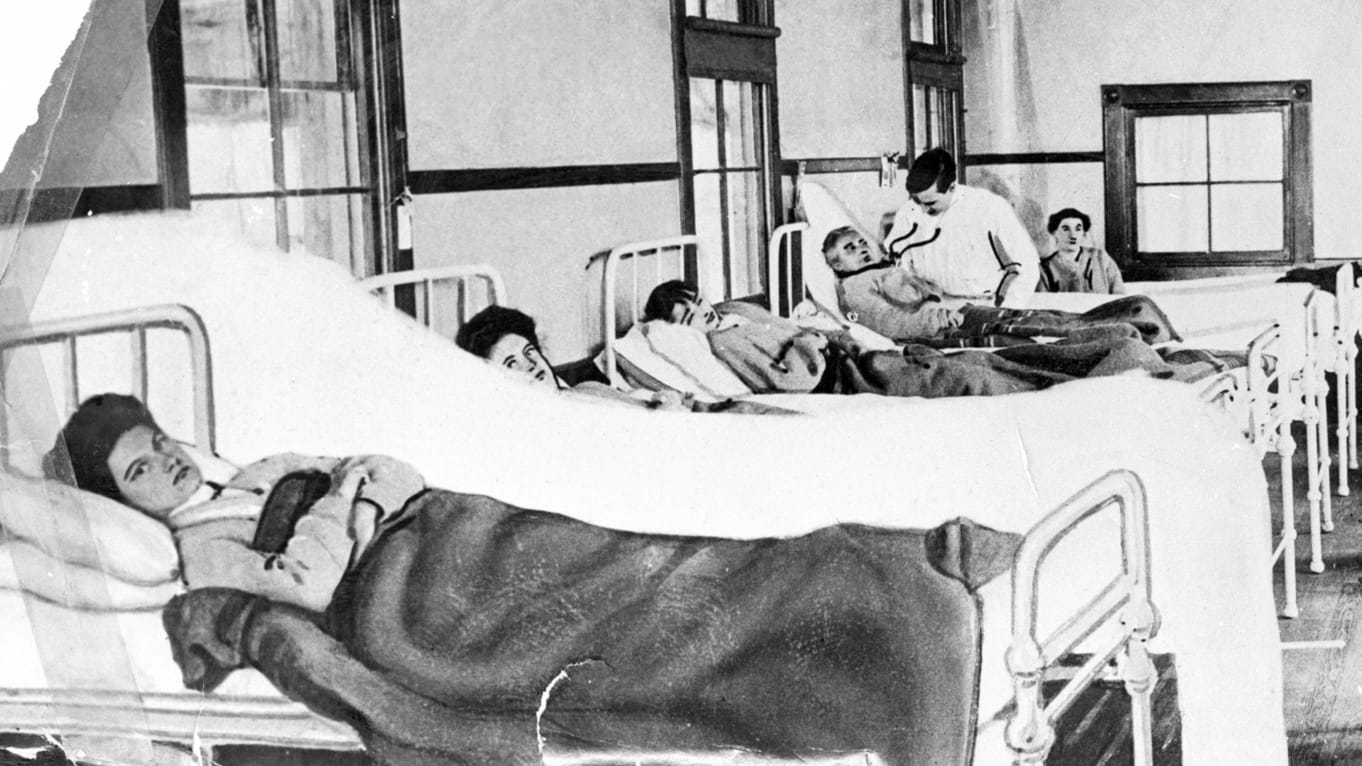
Mary Mallon (September 23, 1869 – November 11, 1938), also known as Typhoid Mary, was the first person in the United States to be identified as a healthy carrier of typhoid fever. Over the course of her career as a cook, she is known to have infected 53 people, three of whom died from the disease. Her notoriety is in part due to her vehement denial of her own role in spreading the disease, together with her refusal to cease working as a cook. She was forcibly quarantined twice by public health authorities and died in quarantine. It is possible that she was born with the disease, as her mother had typhoid fever during her pregnancy.
Mallon was born in 1869 in County Tyrone, Northern Ireland, and emigrated to the United States in 1884. She worked as a cook in the New York City area between 1900 and 1907. She had been working in a house in Mamaroneck, New York for less than two weeks when the residents came down with typhoid. She moved to Manhattan in 1901 and members of the family for whom she worked developed fevers and diarrhea and the laundress died. She then went to work for a lawyer until seven of the eight household members developed typhoid. Mary spent months helping to care for the people she made sick, but her care further spread the disease through the household. In 1906, she took a position in Long Island. Within two weeks, six out of eleven family members were hospitalized with typhoid. She changed employment again and three more households were infected.
People catch typhoid fever after ingesting food or water which has been contaminated during handling by a human carrier. The human carrier is usually a healthy person who has survived a previous episode of typhoid fever but in whom the typhoid bacteria have been able to survive without causing further symptoms. Carriers continue to excrete the bacteria in their feces and urine. It takes vigorous scrubbing and thorough disinfection with soap and hot water to remove the bacteria from the hands. When typhoid researcher George Soper approached Mallon with the news she was possibly spreading typhoid, she adamantly rejected his request for urine and stool samples to ascertain whether she was a typhoid carrier. Soper left and later published his findings in the June 15, 1906 issue of the Journal of the American Medical Association.[1] On his next contact with her, he brought a doctor with him, but was again turned away. Mallon's denials that she was a carrier were based in part on the diagnosis of a reputable chemist who had found she was not harboring the bacteria. It is possible she was in temporary remission when tested. Moreover, when Soper first told her she was a carrier, the concept that a person could spread disease and remain healthy was not well known. During a later encounter in the hospital, he told Mary he would write a book about her and give her all the royalties; she angrily rejected his proposal and locked herself in the lavatory until he left.
The New York City Health Department sent Dr. Sara Josephine Baker to talk to Mary, but "by that time she was convinced that the law was wantonly persecuting her when she had done nothing wrong."[2] A few days later, Baker arrived at Mary's place of work with several police officers and took her into custody. The New York City health inspector investigated and found her to be a carrier. Using powers granted by sections 1169 and 1170 of the Greater New York Charter, Mallon was held in isolation for three years at a hospital located on North Brother Island. Eventually, a new health commissioner decided that Mallon could be freed from quarantine on condition that she agreed to no longer work as a cook and would take reasonable steps to prevent transmitting typhoid to others. Eager to regain her freedom, Mallon accepted these terms and conditions. On February 19, 1910 Mallon agreed that she "is prepared to change her occupation (that of cook), and will give assurance by affidavit that she will upon her release take such hygienic precautions as will protect those with whom she comes in contact, from infection". As a result, she was released from quarantine and returned to the mainland.
However, she had been given a job as a laundress, which paid lower wages than her previous occupation as a cook. Mallon concealed her true identity by adopting the pseudonym "Mary Brown", returned to her previous occupation as a cook, and in 1915 infected 25 people while working as a cook at New York's Sloane Hospital for Women; one of those infected died. Public health authorities again tracked down and arrested Mary Mallon, returning her to quarantine on the island. Mallon was confined there for the rest of her life. She became something of a minor celebrity, and was interviewed by journalists who were forbidden to accept as much as a glass of water from her. Later in life, she was allowed to work in the island's laboratory as a technician.
After spending the rest of her life exiled in quarantine, Mallon died on November 11, 1938 at the age of 69. The cause of death was pneumonia, coming six years after a stroke had left her paralyzed.[2] She was still infectious on the day she died: an autopsy found evidence of live typhoid bacteria in her gallbladder. Her body was subsequently cremated and the ashes buried at Saint Raymond's Cemetery in the Bronx.

No comments:
Post a Comment